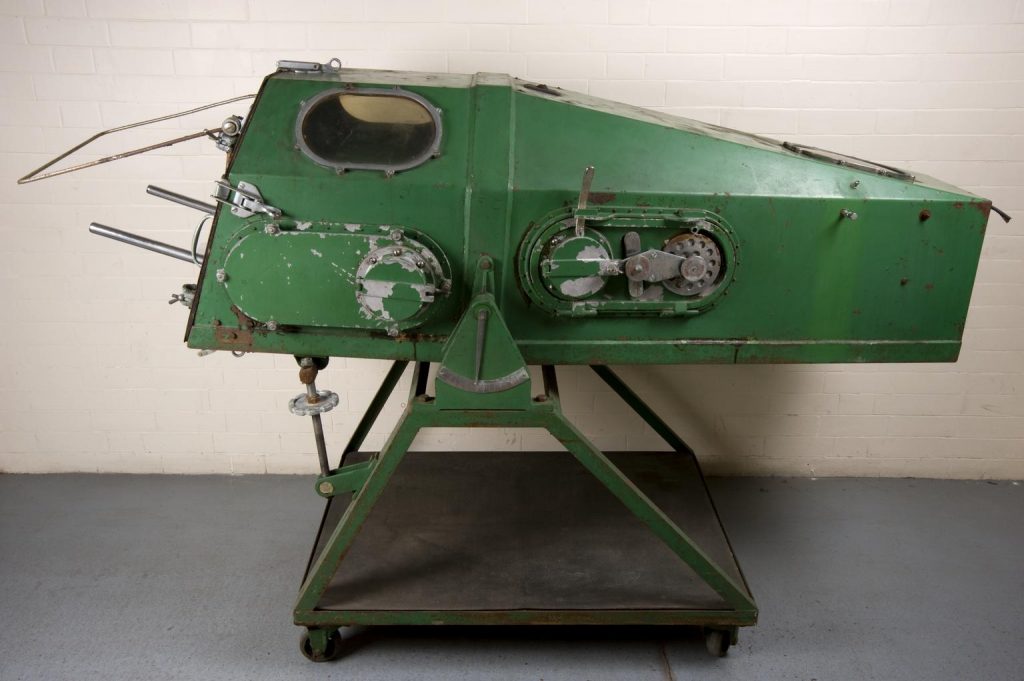Iron Lung

Universally known by its nickname – Iron Lung – the idea for a tank respirator was conceived earlier in the twentieth century (1927) by industrial hygienist Philip Drinker and his physiologist colleague, Louis Agassiz Shaw. The Drinker Tank, however, owes its invention to Drinker’s older brother, Cecil, who was a professor of physiology at the Harvard University School of Public Health. The previous year, the Consolidated Gas Company of New York had drawn upon its Liability Insurance Fund to create a Committee on Resuscitation and Related Activities (of which Drinker was a member) to set about ways to improve employee safety and further research methods of resuscitation. Drinker suggested the committee consider financially backing the research efforts of his brother, an assistant professor in the Department of Ventilation and Illumination and Shaw who were themselves at the School of Public Health and already at work studying true artificial respiration techniques by mechanical means.
The committee agreed making an initial award of $5,000 to bankroll the pair’s development efforts. Having successfully demonstrated the feasibility of their design using an animal model, an additional $2,000 was granted in order to support research on a larger version of the apparatus to be tested next on human subjects. Two years later, in 1929, Drinker along with Dr. Charles F. McKhann published the results of their experiments in the Journal of the American Medical Association, concluding: “The administration of artificial respiration supports the hope that its prolonged application may [provide] the desired means for prolonging life.” The successful demonstration instilled sufficient confidence in Drinker and Shaw’s invention that Consolidated Gas purchased a fully functional respirator from Harvard and donated it to New York City’s Bellevue Hospital for future use. Later that year, in the Journal of Clinical Investigation, Drinker and Shaw provided extensive details on the design and operation of the respirator which had been used for the first time in a clinical setting the previous year at the Boston Children’s Hospital. An eight-year-old girl stricken with respiratory paralysis survived in the respirator for 122 hours. Although the child died from other complications, the use of the respirator demonstrated that in cases of poliomyelitis, respiratory failure could be managed temporarily at least by artificial means.
Amazingly straightforward, the original design of the Drinker respirator was a pressurized sheet iron chamber with a set of bellows attached at one end to pump air in and out. “The body of the tank [was] equipped with portholes numerous small holes for inserting thermometers, attaching manometers, connecting pneumographs, blood pressure cuff or stethoscope.” As Joan Ogden noted in her oral history, the patient was placed inside on one’s back, “all the way up to your neck so only your head extends [sic].” Fitted with a rubber collar around the neck, Ogden’s life in the iron lung was dependent on an airtight seal. At its most basic, the iron lung is a respirator that works by means of external negative pressure ventilation. In ENPV, the bellows drain air out of the chamber by way of suction. As the air pressure within the chamber falls, the patient’s lungs respond spontaneously drawing in fresh air. At that point, the bellows reintroduce air back into the chamber. As the internal air pressure rises, the lungs deflate. For patients afflicted with paralytic polio, the rhythmic cycle of the bellows expanding and contracting in cadence with its audible hiss was a reassuring existential medley.
